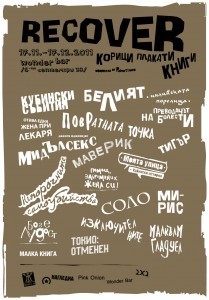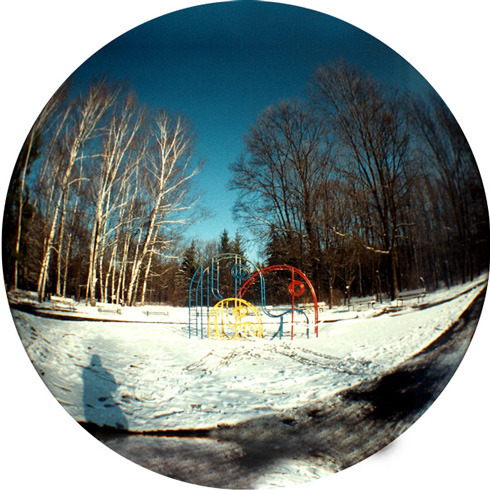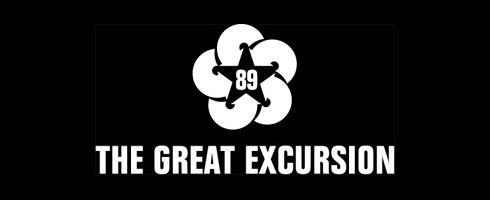Raycho Stanev's Blog, page 6
March 8, 2012
Helvetia
Helvetia
интерактивен дневник на Райчо Станев
www.helvetia.nagledna.net
Откриване на изложбата
14.3., 18.00 ч.
Гьоте-институт
София, ул.Будапеща 1
Експозиция: 15.-31.3.
Helvetia: природа, полиция, (не)скука и правила
Детайли от дневника на трийсетдневната ми обиколка из Швейцария. Сбор от дребни подробности – снимки, бележки, бегли впечaтления, неволни сравнения.
Още в началото на швейцарското си пътешествие си мислех как понякога един детайл е способен да даде представа за цялостната картина; как през детайлите – малките неща, необичайните места – може ненатрапчиво да се представи действителността, така че всеки да я види по свой начин. С апарат, бележник и диктофон се впуснах в обиколката на тази нова за мен страна, която сякаш не обещаваше неистови вълнения. Ингрид, Крис, Нийл, Сибил, Катрин и Хелен бяха част от хората, които ми помогнаха да изградя мрежа от познанства и да свържа градовете с лица, съдби и думи, а не просто с произволни улици и дежурни забележителности.
Объркване беше основното чувство, което предизвика у мен първоначалният ми опит да сравня Швейцария с България – две близки по природа и не много големи по площ страни. Гората уж е същата, а не мирише; хем е шумно, пък гласове и музика не се чуват; релсите, асфалтът и туристите са навсякъде, дори високо в планината, но големи хотели липсват; уж е спокойно, а полицията е навсякъде; уж си свободен, а правилата и ограниченията са безброй. Вглеждайки се обаче по-внимателно в малките неща наоколо, сравнението взе да става по-леко и да възкресява в паметта ми сродни случки и места от София, Варна, Кърджали, морето и, разбира се, планините в България. Същото се случи и по отношение на хората, които се оказаха далеч от опасението ми за отегчителна сериозност…
идея и реализация: Райчо Станев
превод на немски: Мария Енчева
редакция: Нева Мичева
корекция: Евгени Богданов
дизайн и реализация на изложбенoто
пространство: Иван Радев, Райчо Станев
с подкрепата на:
• Швейцарското
посолство в България
• Гьоте-институт
• НАГЛЕДНА
February 2, 2012
DEALING WITH THE PAST

Presentation & Critical Debate with Raycho Stanev
Starting point for discussion is the interactive installations about the memories of Socialism time:
• Stories for 1968 – the tipping point for East Europe
• Visual Propaganda and how it use to work
• The Great Excursion – project about bulgarian Turks hundreds of thousands of who were expelled from Bulgaria in 1989. A hidden chapter of European history, almost unknown in West Europe, it is a reminder of what happens when DNA, rather than our shared humanity, is the focus of attention.
7.02.2012 (tuesday)
19.00 h
Bulgarisches Kulturinsitut Berlin
Leipziger Str. 114-115
10117 Berlin
————————–
Raycho Stanev lives and works in Sofia. He is a visual artist and designer whose work includes various art installations, illustrations, audio and video projects presented in Bulgaria, United Kingdom, Switzerland, Italy, Norway, Cuba and India. Raycho's installations are reflecting past and present, personal memories, heritage (communist) policies and urban cultures.
December 16, 2011
ReCover
RECOVER е един експеримент, който има за цел да прескочи обичайните медии използвани за типография и илюстрация.
Но нека първо да направя паралела между съвременното изкуство и съвременната литература и за това колко много ми помага това че се занимавам със съвременно визуално изкуство, за да правя корици. Всъщност всичко е едно – без значение дали говорим за съвременна литература, изкуство или музика, тенденциите вървят заедно една с друга, само медиите са различни. Тук е момента да отбележа как това, че чета и оформям съвременна литература страшно много ми помага да правя и съвременно изкуство. Всичко се завърта и захранва едно от друго и допирнaта точка са точно кориците.
И така отделям нещата в няколко отделни фрагменти, които не просто повтарят едно и също послание през различни медии, а всъщност се допълват и надграждат:
- Изложба със скици по основните проекти/книги
- Текстове и бележки в блога ми, маркиращи работата по кориците
- Документален филм за начина ми на работа и връзката м/у съвременното изкуство и литература, който можете да изгледате долу
- Нет-арт проект с интервюта на зрители/читатели на книгите които съм оформял
- Накрая, но всъщност най-важната медия, а именно самите книги, които чрез кориците си разпространяват моята форма на изкуства из цялата книжарска мрежа – във всеки град и всяко село, където има книжарница.
Следете тази страница във фейсбук, за да се информирате за различните етапи на проекта. А сега – приятно гледане на филма на Евгени Богданов
July 5, 2011
Токио: отменен
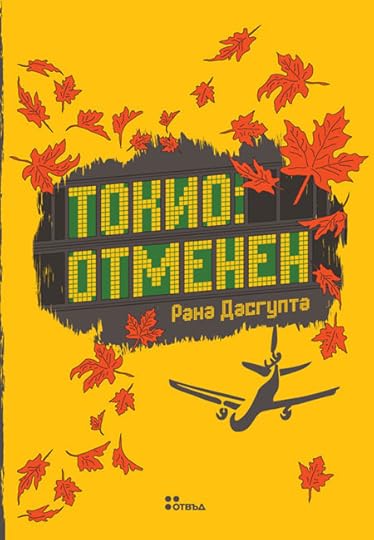
Нежна и изящна, "Токио: Отменен" е втората книга на Рана Дасгупта, която илюстрирам, след "Соло". 13 невероятно красиво описани истории с тънки нишки, прокарващи връзката по между им. 13 души, блокирани на пусто летище в очакване на полета си до Токио, убиват времето, разказвайки истории. Многобройните преводи дават възможност да надникна през английска, американски, италиански, френски и немския поглед за корици.
Немската ме грабва още от пръв поглед, най-концептуална и точна – тъмносиня нощ, самолет звезди, сложна плетеница от линии помежду им. И аз виждам нещо подобно, намирам го перфектно описано в едно кратко изречение на края на книгата. Японец, който всъщност и разпалва останалите по споделяне на истории, завършва с:
Приятели, време е да се сбогуваме. (Същият японец, дрехите му попригладени и изопнати за новия ден, изглежда някак по-дребен и бюрократичен от преди.) Едва ли ще се видим пак. Не пътувам много, в крайна сметка, за мен това наистина е рядкост, пък и, да ви призная, не съм много общителен. Не че не обичам хората, но се чувствам доста по-спокоен в чужда компания, след като съм прекарал известно време с тях и се познаваме. Пет, десет години. Трудно завързвам нови приятелства! Както и да е, казвам ви всичко това, защото не искам да обидя някого, просто съм си такъв, а сега ми се струва, че е време да вървя. Качвайте се на самолета и дано успеете да поспите, преди да се впуснете в новия ден. Да, още с пристигането тръгвам към офиса! Мир няма за нечестивите… Но искам също така да ви благодаря за историите. Ще ви запомня всичките – по разказаното от вас. Толкова много истории. Напомня ми за листата, които токийската община измита всяка есен от улиците на града!
Говоря хаотично… Радвам се, че успях да запомня няколко от разказите. Истина ви казвам, жена ми ще ги чуе всичките. Пък дори да ми отнеме още цяла нощ, докато й ги предам! Спомням си онзи мъж, дето почина в Париж… Както и да е, времето лети. Сбогом на всички.
И с тези думи той вдигна куфарчето си, обърна им гръб и отиде да се нареди на опашката пред Изход 5.
И така, имаме всичко – самолет, летище (таблото с надписа), листата, възприемайки ги веднъж поотделно (лист по лист) и втори път – като едно цяло (шума – хомогенна смес, заливаща улиците през есента).
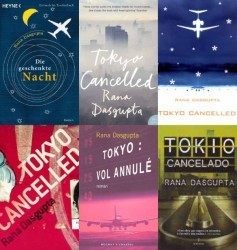
January 31, 2011
Помощ забремених жена си!

Започнах да чета книгата в самото начало на лятото, мисля че това е идеалното време за подобно четиво – леко, остроумно и забавно. След тежката артилерия на "Отива една жена при лекаря" и "Без нея", това направо е един истински хумористичен шедьовър на Клуун. Тук виждаме как той умее да ни забавлява и с обичайните забавни ситуации, без да използва типичния черен хумор от предишните две издания.
И така третата книга от т.н. клуунска минипоредица изглеждаше като да дойде носейки се по течението на останалите две по добре отработената вече схема – заглавие, илюстрация и снимка. Само че тук вече се замислих над това колко важна е типографията за една корица и как тя е поне 90% от нея и това как не мога да използвам същия тежък блоков шрифт от предишните две поредици ако искам да изкарам характера на книгата. Искаше ми се да отделя не просто с цвят лекотата и забавата на тази книга и в същото време да си остане част от поредицата. Оказа се не чак толкова непосилна задача – върнах се към първообраза "Отива една жена при лекаря" и го облях със сперма, една от най-често използваните и ключови думи от книгата.

December 22, 2010
xmas lomoscope
follow the link to see the LOMOSCOPE :)
LOMOSCOPE was made by NAGLEDNA.The name is based on two words: "lomography" comes from the camera I am using for the pictures and "scopos" [from Ancient Greek] means watcher. So a LOMOSCOPE is a "lomography watcher".
Merry Xmas, Happy New Year and Best Wishes from NAGLEDNA!
November 23, 2010
Изключителните от Малкълм Гладуел

Изключителните" увлекателно четиво с малко странни, но находчиви теории на чудака Малкълм Гладуел. Помня как преди две години получих за рождения си ден "Повратната точка" от същия автор – първия ми сблъсък с подобен род четиво (едновременно популярна наука, поп-икономика, self-help и забавление според Entertainment Weekly), не бях особено ентусиазиран в началото. Не ми хареса постоянното повтаряне на основните факти, но някак си неусетно започнах да навлизам в теориите описани там, да пресмятам, отбелязвам и разбира се да се опитвам да ги прилагам. Същото бе и с "Изключителните", където отново в началото не бях много убеден дали това е "моята" книги, имайки в предвид, че съм роден почти в самият край на годината – малко трудно преглътнах повтарянето как родените в началото на годината са много по облагодетелствани (па било то и само за хокеистите). За радост това бе само в началото, след което последваха и останалите теории, където и намерих и най-силно открояващата се – за ориза и математиците. Добавяйки и факта, че математиката от малък ми слабост, решението не бе много трудно.
Интересното бе че за първи път подготвях две корици абсолютно едновременно, добър подход говорейки за поредица – лесно забележима и индивидуална визия.
Ето и малко повече за книгата:
Запитвали ли сте се защо някои хора са постигнали забележителен успех, докато други – също толкова способни – не са успели? Има ли някаква тайна зад невероятния успех на Бийтълс, Бил Гейтс и бизнесмените, родени през
30-те, за разлика от родените през 40-те години на ХХ век?
Тази книга се опитва да отговори на подобни въпроси, използвайки социологически, културно-исторически и поколенчески анализи, и не на последно място прост и ясен език.
Малкълм Гладуел задава въпроса: кое прави свръхуспешните хора различни? Отговорът е, че ние прекалено се фокусираме върху това как изглеждат успешните хора, и почти никак на това откъде са тръгнали: каква е тяхната култура, от какво семейство са, какво поколение, а също при какви условия са отраснали. Гладуел, който вече ни предизвика да осмислим заразния потенциал на идеите, принципа на действие на социалните епидемии и силата на интуитивните реакции, сега с книгата си "Изключителните" задава поредния провокативен въпрос: защо някои хора успяват? Защо едни водят продуктивен живот за пример, докато други никога не съумяват да разгърнат потенциала си?"
Представяне:
25 ноември 2010, (четвъртък), 19.00 ч.
Onda Coffee Break
София, бул. Цар Освободител 8А
(срещу Руската Църква)
October 11, 2010
"The Great Excursion" in London
23rd October (Saturday)
The Critical Debate and launch
3:00PM- 4:30PM | FREE
HANBURY HALL | 22A HANBURY STREET | E1 6QR | LONDON
To mark the opening of the installation at THIS IS NOT A GATEWAY FESTIVAL, Raycho Stanev, Sandra Hall (Friction Arts) and Rouzie Hassanova host a critical debate on race, nationality and cultural identity. What it is that makes us who we are; our DNA, our history, our upbringing? Come down and have your say.
Raycho Stanev's installation will be at HANBURY HALL 22nd – 24th October (Friday – Saturday)
Raycho Stanev's interactive installation contains memories of Bulgarian Turks, hundreds of thousands of whom were expelled from Bulgaria in 1989.
A shameful, hidden chapter of European history, almost unknown in the West, it is a reminder of what happens when DNA, rather than our shared humanity, is the focus of attention. Imagine everyone with Jamaican ancestry suddenly being sent from the UK back 'home' to Jamaica – a place where nobody knows you, where you have no connections, leaving behind the community in which you grew up.
The Great Excursion gives a fascinating and disturbing insight into what happens to a community when politics takes over from reality. Is it where you're from, or where you're at, that matters?
—————————-
The Great Excursion is an installation examining my memories of the expatriation of Bulgarian Turks into Turkey in the summer of 1989.
Sometimes it's difficult to collect your memories from 20 years ago, especially if you were a child, at the age of 12 – only fleeting fragments, bits and pieces of stories, emotions and feelings. I create an imaginary puzzle of memories and feelings, stories: neighbors – an insult – a truck – bed-quilts and pillows – a fridge – farewell – tears – empty houses – empty classrooms – expectation are some of the words I associate with the term The Great Excursion.
I am trying to fill up the emptiness which this period has left in me, to spin threads between the different stories, to understand – as a direct witness – what the excursion means to me, since no one around me talks about it. I almost can't recollect whole stories; and I am surprised to discover that the people around me can't do it either. I have grown up in the town of Kurdzhali (situate in South Bulgaria where live a lot of Turks), I am a Bulgarian, but there were several Turkish houses on our street, Alen Mak; at school I also had Turkish classmates. My father worked as a teacher in the Turkish villages around the town – from 1972 to 1980; my mother was also a teacher, even though only in Dzhebel – with more than 30 years of professional experience.
We are all directly connected to these events but we seldom, almost never, talk about them. Why? I am trying to understand and to initiate a conversation – how did people actually feel, we, my neighbors, what have we gone through in that period, why no one is sharing? Both Turks and Bulgarians speak of the general facts, men remain in the the background.
Raycho Stanev
—————————-
Remembering 1989 the Goethe-Institut Bulgarien organized 2009 a series of events showing the impact of the changes wish happened along with the fall of the wall. Some of these events focused on specific Bulgarian aspects, among them the expatriation of the majority of the Bulgarian Turks in summer 1989. In this context the Goethe-Institut supported Raycho Stanev's installation project "The Great Excursion", exhibited in the gallery of our institute from October 15th to 30th 2009.
Raycho Stanev is examining his memories on the tragic banishment using emotions and stories from people who had to leave the country. His artistic and mere descriptive approach to a political and sensitive topic is free of accuse. The installation project is unique, since it is the very first attempt in the past 20 years in Bulgaria to talk about the expatriation.
Dr. Rudolf Bartsch
Director
Goethe-Institut Bulgarien
—————————-
What I like about Raycho's project is its simplicity. It sounds so innocent that you need some time to realise that the core of the project is trauma. Collective trauma is „blow to the basic tissues of social life that damages the bonds attaching people together" ( according to sociologist Kai Erikson). Bulgarians know that process – the so called "revival process" – the process of forceful change of the turkish names of the turkish population in Bulgaria with slavic names in the 80-s that ended with huge wave of migration to Turkey in 1989 and was followed by unended wave of shame and guilt, still unspoken in our society – this complex very emotional story is presented in Raycho's work through the eyes of a child. These are his own eyes, the child who witnessed the "trauma" that expelled from school and neighbourhood his friends and peers. The child who just observes without understanding. It is exactly this simplicity and innocence that make the project powerful. Memories and fragments – the only remains and the only way to know, to access the untalkable.
It is deeply moving, honest and personal project executed in the typical for the artist precise, clear and beautiful style.
Diana Ivanova,
Culture manager
—————————-
The Great Excursion is sound installation dedicated to … silence. It is presented very briefly in the small hall of Goethe institute: short daily phrases written in mixed order on the walls, central text with conception and facts, on the space between the two windows, and beneath – the computer through which the spectator/listener drives the composition.
In a way it is autobiographic also. The author – Raycho Stanev – has been a 12 years old child in Kardzhali, when "The Great Excursion"- in a mass emigration of the Bulgarian Turks to Turkey, happened in the summer of 1989. The fearful compulsion, grotesquely given formal legalization by tourist visas for tens of thousands people, penetrates through the deeply moving, banal childhood memories and observations. Worries about a video game, given to a neighbor child-Turk who may leave and not return it ("they did not left. he gave it back."); a dog, which returnes back home alone after a whole year; the father, who works at the editor's office in the morning and at the tobacco field in the afternoon ("and he was not complaining"); the rumors, selling of properties, cars and animals at a knock out price; counting in the autumn the number of children remained at school ("Did Hristinka left also – I thought she is Bulgarian")…
The eyes pass over all these while the words of the emigrants sound. Each key of the computer brings out a short phrase – one or two sentences at most, in which female and male voices build the picture of the Great Excursion with pieces of their lives. Literally. The horror to leave to an unknown country, without any relatives there and without knowing the language, drowns in the hectic preparation, overwhelmed with providing provisions, waiting for visas, travelling of whole families with infants in overloaded cars and trucks, waiting for days at the border and for some of them – way back as cruel as that (when Turkey cannot accept more emigrants).
You can press the keys of the computer in a mixed or consecutive order but the picture did not change. You will anyway fall on the light motive "The most fearful was the change of names", referring to the winter of 1984-1985 with the pompous heading "Revival Process". In general, only loud headings mark the complicated life of these people and, in big extend, my own also.
Because, at the time of the Great excursion I have been almost at the age at which is the author of installation at the moment. And, in this sense, I do not have the excuse of the childhood. I continue asking myself if I could do something different at that time from watching with disgust on TV the ironic reports of Margarita Mihneva, making fun of the miserable queues of crowded cars with "excursionists", or crowds at the meetings of the government with waves of highly patriotic hatred.
And also for the fact I was in Shumen, Targovishte and Razgrad during the Revival process. There is no way to forget the bristle and at the same time painful atmosphere; the triples of a policeman and solders slowly walking over the streets; meetings with people who have hided for weeks in some cave, under temperature of minus 20 degrees, however renamed in the long run – some of them twice (because of bureaucratic mistakes); the trains I was getting on and was suddenly finding myself not among peaceful citizens but fully armed soldiers (I have travelled this way only in ex GDR – in wagons with Russian soldiers); the rumors about Kardzhali and the region, which were totally disconnected from the world… Could I do something else than sympathizing to known and unknown people – with the entire guilty discomfort of the accidental fact that I am a Bulgarian.
And more, because someone told me that all this was boring to my young colleague. If honest, I envied her – she does not have my questions with twenty years prescription.
Diana Popova
"CULTURE" newspaper,
issue 38, 6th November 2009
Анелия

Илюстрация към разказа "Анелия" (или аз поне така го кръстих) от последната сбирка на "Лигата на разказвачите" :)
“The Great Excursion” in London
23rd October (Saturday)
The Critical Debate and launch
3:00PM- 4:30PM | FREE
HANBURY HALL | 22A HANBURY STREET | E1 6QR | LONDON
To mark the opening of the installation at THIS IS NOT A GATEWAY FESTIVAL, Raycho Stanev, Sandra Hall (Friction Arts) and Rouzie Hassanova host a critical debate on race, nationality and cultural identity. What it is that makes us who we are; our DNA, our history, our upbringing? Come down and have your say.
Raycho Stanev’s installation will be at HANBURY HALL 22nd – 24th October (Friday – Saturday)
Raycho Stanev’s interactive installation contains memories of Bulgarian Turks, hundreds of thousands of whom were expelled from Bulgaria in 1989.
A shameful, hidden chapter of European history, almost unknown in the West, it is a reminder of what happens when DNA, rather than our shared humanity, is the focus of attention. Imagine everyone with Jamaican ancestry suddenly being sent from the UK back ‘home’ to Jamaica – a place where nobody knows you, where you have no connections, leaving behind the community in which you grew up.
The Great Excursion gives a fascinating and disturbing insight into what happens to a community when politics takes over from reality. Is it where you’re from, or where you’re at, that matters?
—————————-
The Great Excursion is an installation examining my memories of the expatriation of Bulgarian Turks into Turkey in the summer of 1989.
Sometimes it’s difficult to collect your memories from 20 years ago, especially if you were a child, at the age of 12 – only fleeting fragments, bits and pieces of stories, emotions and feelings. I create an imaginary puzzle of memories and feelings, stories: neighbors – an insult – a truck – bed-quilts and pillows – a fridge – farewell – tears – empty houses – empty classrooms – expectation are some of the words I associate with the term The Great Excursion.
I am trying to fill up the emptiness which this period has left in me, to spin threads between the different stories, to understand – as a direct witness – what the excursion means to me, since no one around me talks about it. I almost can’t recollect whole stories; and I am surprised to discover that the people around me can’t do it either. I have grown up in the town of Kurdzhali (situate in South Bulgaria where live a lot of Turks), I am a Bulgarian, but there were several Turkish houses on our street, Alen Mak; at school I also had Turkish classmates. My father worked as a teacher in the Turkish villages around the town – from 1972 to 1980; my mother was also a teacher, even though only in Dzhebel – with more than 30 years of professional experience.
We are all directly connected to these events but we seldom, almost never, talk about them. Why? I am trying to understand and to initiate a conversation – how did people actually feel, we, my neighbors, what have we gone through in that period, why no one is sharing? Both Turks and Bulgarians speak of the general facts, men remain in the the background.
Raycho Stanev
—————————-
Remembering 1989 the Goethe-Institut Bulgarien organized 2009 a series of events showing the impact of the changes wish happened along with the fall of the wall. Some of these events focused on specific Bulgarian aspects, among them the expatriation of the majority of the Bulgarian Turks in summer 1989. In this context the Goethe-Institut supported Raycho Stanev’s installation project “The Great Excursion”, exhibited in the gallery of our institute from October 15th to 30th 2009.
Raycho Stanev is examining his memories on the tragic banishment using emotions and stories from people who had to leave the country. His artistic and mere descriptive approach to a political and sensitive topic is free of accuse. The installation project is unique, since it is the very first attempt in the past 20 years in Bulgaria to talk about the expatriation.
Dr. Rudolf Bartsch
Director
Goethe-Institut Bulgarien
—————————-
What I like about Raycho’s project is its simplicity. It sounds so innocent that you need some time to realise that the core of the project is trauma. Collective trauma is „blow to the basic tissues of social life that damages the bonds attaching people together” ( according to sociologist Kai Erikson). Bulgarians know that process – the so called “revival process” – the process of forceful change of the turkish names of the turkish population in Bulgaria with slavic names in the 80-s that ended with huge wave of migration to Turkey in 1989 and was followed by unended wave of shame and guilt, still unspoken in our society – this complex very emotional story is presented in Raycho’s work through the eyes of a child. These are his own eyes, the child who witnessed the “trauma” that expelled from school and neighbourhood his friends and peers. The child who just observes without understanding. It is exactly this simplicity and innocence that make the project powerful. Memories and fragments – the only remains and the only way to know, to access the untalkable.
It is deeply moving, honest and personal project executed in the typical for the artist precise, clear and beautiful style.
Diana Ivanova,
Culture manager
—————————-
The Great Excursion is sound installation dedicated to … silence. It is presented very briefly in the small hall of Goethe institute: short daily phrases written in mixed order on the walls, central text with conception and facts, on the space between the two windows, and beneath – the computer through which the spectator/listener drives the composition.
In a way it is autobiographic also. The author – Raycho Stanev – has been a 12 years old child in Kardzhali, when “The Great Excursion”- in a mass emigration of the Bulgarian Turks to Turkey, happened in the summer of 1989. The fearful compulsion, grotesquely given formal legalization by tourist visas for tens of thousands people, penetrates through the deeply moving, banal childhood memories and observations. Worries about a video game, given to a neighbor child-Turk who may leave and not return it (“they did not left. he gave it back.”); a dog, which returnes back home alone after a whole year; the father, who works at the editor’s office in the morning and at the tobacco field in the afternoon (“and he was not complaining”); the rumors, selling of properties, cars and animals at a knock out price; counting in the autumn the number of children remained at school (“Did Hristinka left also – I thought she is Bulgarian”)…
The eyes pass over all these while the words of the emigrants sound. Each key of the computer brings out a short phrase – one or two sentences at most, in which female and male voices build the picture of the Great Excursion with pieces of their lives. Literally. The horror to leave to an unknown country, without any relatives there and without knowing the language, drowns in the hectic preparation, overwhelmed with providing provisions, waiting for visas, travelling of whole families with infants in overloaded cars and trucks, waiting for days at the border and for some of them – way back as cruel as that (when Turkey cannot accept more emigrants).
You can press the keys of the computer in a mixed or consecutive order but the picture did not change. You will anyway fall on the light motive “The most fearful was the change of names”, referring to the winter of 1984-1985 with the pompous heading “Revival Process”. In general, only loud headings mark the complicated life of these people and, in big extend, my own also.
Because, at the time of the Great excursion I have been almost at the age at which is the author of installation at the moment. And, in this sense, I do not have the excuse of the childhood. I continue asking myself if I could do something different at that time from watching with disgust on TV the ironic reports of Margarita Mihneva, making fun of the miserable queues of crowded cars with “excursionists”, or crowds at the meetings of the government with waves of highly patriotic hatred.
And also for the fact I was in Shumen, Targovishte and Razgrad during the Revival process. There is no way to forget the bristle and at the same time painful atmosphere; the triples of a policeman and solders slowly walking over the streets; meetings with people who have hided for weeks in some cave, under temperature of minus 20 degrees, however renamed in the long run – some of them twice (because of bureaucratic mistakes); the trains I was getting on and was suddenly finding myself not among peaceful citizens but fully armed soldiers (I have travelled this way only in ex GDR – in wagons with Russian soldiers); the rumors about Kardzhali and the region, which were totally disconnected from the world… Could I do something else than sympathizing to known and unknown people – with the entire guilty discomfort of the accidental fact that I am a Bulgarian.
And more, because someone told me that all this was boring to my young colleague. If honest, I envied her – she does not have my questions with twenty years prescription.
Diana Popova
“CULTURE” newspaper,
issue 38, 6th November 2009


